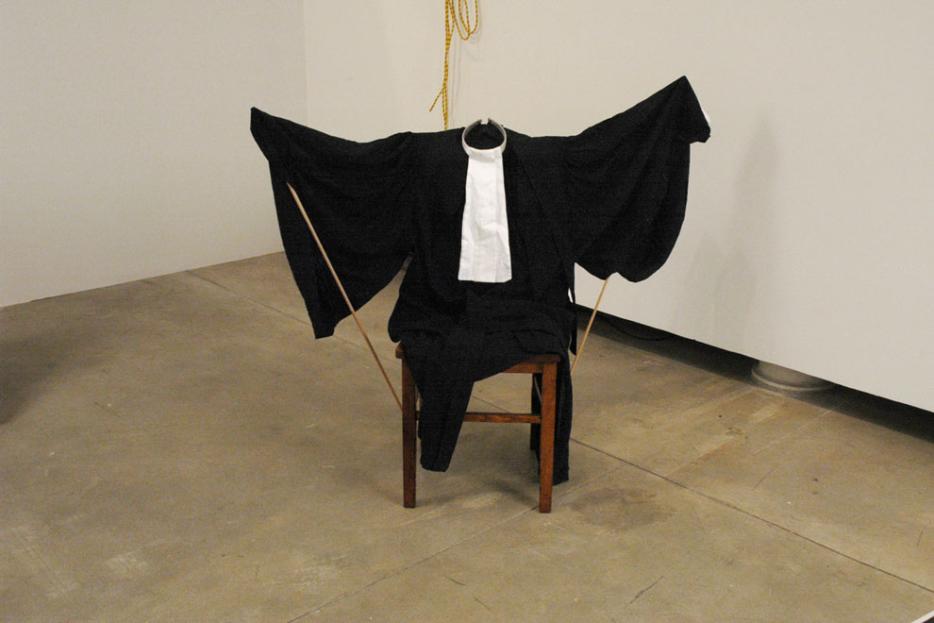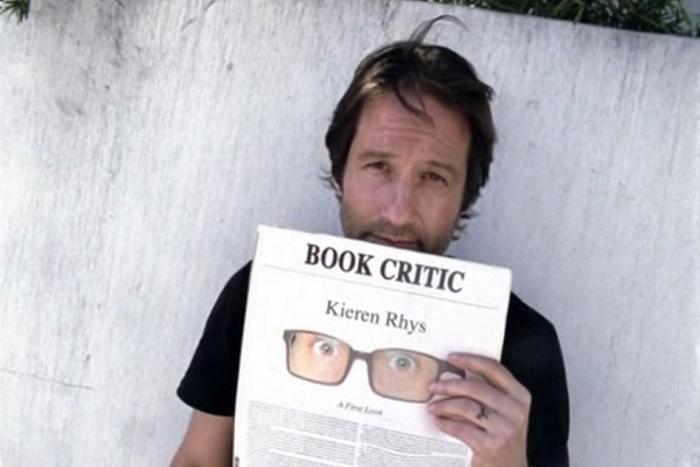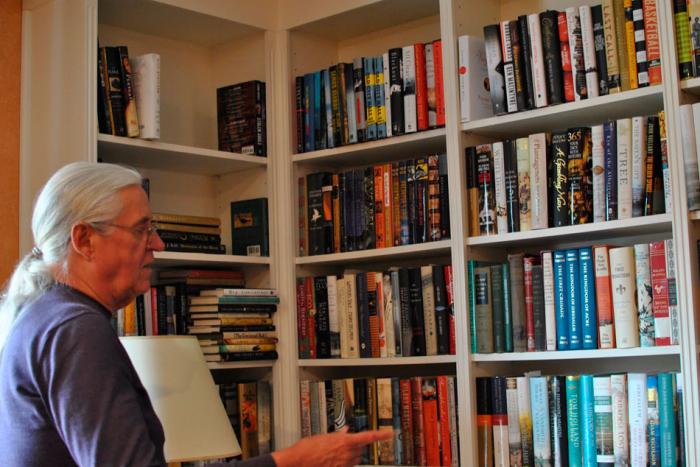“You’re not going to get a decision today,” Justice Brookhaven says, then stretches her arms over her head, which momentarily makes her black robe look like a superhero costume, something Batman would wear. She lowers her arms. The affect disappears. “But go out, prepare your summations, and we’ll come back at one.”
Justice Brookhaven looks at the clock on the wall, compares it to her watch, then she stands and so do we. She exits through a door beneath the Judicial Crest. We file towards the doors at the back. The only one who doesn’t is Pia, a second year paralegal student who’s been watching the trial from the second row. Pia sits down, resumes making notes on lined-paper in a three-hole binder. She’s dressed completely in white; white blouse, white jacket, white jeans. Her hair is carefully braided, every strand pulled into place, the braid hanging over the back of the bench, halfway to the floor. Pia flips a page, shakes out her hand, continues to write, her blue Bic pen a blur of motion.
Through out this trial, a seemingly uncomplicated matter between landlord and tenant, Pia’s has paid the upmost attention. At no time, not for a second, has she allowed her focus to lapse. She’s listened to every question and its answer, nodding her head when she agrees, crinkling her eyebrows when she doesn’t. One year from now Pia plans to be behind the long polished wooden bench herself, pleading cases in front of the Justice. For now she’s limited to watching trials in Small Claims Court, writing reports, a task that every second-year paralegal student has to complete. It’s an assignment most paralegals-in-training see as homework, a scholastic chore, something interrupting whatever it is that they’d rather be doing. Pia seems different. She’s engaged. She isn’t just recording a sequence of legal events, she’s deciding who she believes and who she doesn’t. She isn’t documenting this trial to complete a course requirement: she’s digging for truth.
She’s still making notes when I follow the defendant, Stacey, out through the doors at the back of the courtroom and into the waiting room. Stacey is a stout woman whose age I’m still having a hard time determining. Her hair is silver, but it’s cut in a stylish-bob that most middle-aged woman couldn’t pull off. She has spent the entire trial leanings forwards, literally sitting on the edge of her chair. She’s glamorous, maybe even sexy, yet somehow gives off the impression of mushrooms. Even as I watch her go outside and lit a cigarette, I’m still thinking about mushrooms.
The plaintiff, Maryanne, is next to exit the courtroom. The inverse of Stacey, Maryanne is a mousy woman wearing a brightly coloured blouse, black hair that climbs ivy-like down her back. She sits in the waiting room, looks up, sees Stacey smoking, glares at her. Maryanne doesn’t look back down until Stacey has extinguished her cigarette beneath the toe of her high-heeled shoe and walked away. Only then does she open a large manila envelope and pull out a thick stack of loose papers. She exhales, heavily, puts the nail of her index fingernail in her mouth. I sit down across from her, make these notes and then I get up to get lunch. When I get back, I’m surprised to see that Pia and Maryanne are huddled in the corner of the waiting room.
Pia’s textbook is on her lap. The textbook is thick. It’s open. She flips through pages, reads a passage out loud. For a second her eyes grow big, convinced that she’s found the right argument. Then she bites her bottom lip, shakes her head, looks down and flips through the book again. Clearly Pia’s decided that the truth in this case lies with Maryanne’s arguments and she’s trying to use her judicial knowledge to help, searching for paragraphs of law that she can wield, sword-like, to cut justice from thin air. But for every passage Pia discovers, and the strategy it suggests, she comes up with her own refutations. A second piece of her knowledge denies the first, telling her why it won’t work. Each passage she discovers she soon discards as unusable.
“No. It won’t work. You have to prove malice.”
“Can you do malice accidentally?”
“No,” Pia says.
Her finger rests on a single word in the middle of a highlighted passage. It stays there. Pia looks up, to her right. A mixture of disappointment and insight comes into her eyes. It’s as if Pia has just realized, suddenly and all at once, that truth, perhaps all truth, but certainly in a legal setting, is determined. That it isn’t a naturally occurring substance, something that will slip into the courtroom like sunlight, manifesting on the long wooden table between the plaintiff and the defendant. That it’s manufactured, no different than sandwiches or automobiles, by ordinary people. By lawyers. By her. Her finger is still on that word, whatever it is, when the court reporter unlocks the door and it’s time to go back inside.
“Well, thanks anyway,” Maryanne says, collects her papers. “Better than nothing.”
“Better than nothing,” Pia repeats, closes her textbook and follows Maryanne back into the courtroom.






